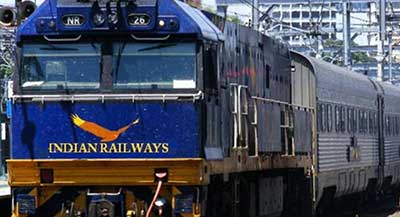Relevance: GS-3- Infrastructure: Energy, Ports, Roads, Airports, Railways etc
Key Phrases: Hungry for Cargo Mission, lifeline of India, National Rail Plan, Rail Development Authority, Bibek Debroy committee.
Why in News?
- Recently, Indian Railways has planned to map coal, mineral mines, and ports across the country which have zero or inadequate connectivity and make them part of its flagship mission Hungry for Cargo.
- The Railways will build new lines and boost the existing network from these areas to the main rail grid.
About Indian Railways:
- India’s railway network is the 4th largest railway network in the world and 2nd largest in Asia, under single management.
- Indian Railway is the main artery of the country, it is also called as lifeline of India which provides both freight and passenger mode of transportation.
- It contributes in the national growth and economic integration of the country.
- Indian Railways is among the world’s largest rail networks. Indian Railways route length network is spread over 1,23,236 km, with 13,452 passenger trains and 9,141 freight trains plying 23 million travellers and 3 million tonnes (MT) of freight daily from 7,349 stations.
Key Highlights:
- Indian Railways is mapping and surveying 48 coal and mineral mines and 29 ports for this project. It has identified approximately 100 million tonne (mt) of minerals that need last mile connectivity.
- The project is currently at survey stage, the Railway Ministry is eyeing an additional revenue of ₹ 10,000 crore by connecting these mines and ports, spread across 52 districts, to the rail network.
- The Ministry has surveyed these locations primarily for three minerals: coal, iron ore, and bauxite.
What is the Hungry for Cargo Mission?
- Hungry for Cargo is an internal project of the Railway Ministry under which the Railways is aiming to increase freight revenue.
- It is being done by bringing in new commodities, identifying new cargo opportunities in existing and newer sectors and regions.
- In the near term, the Railways is aiming to load over 2,000 mt of cargo by 2023-24, under the project ‘2,024 by 2024’.
- In 2021-22, it recorded 1,278 mt of freight until February and is poised to cross 1,400 mt in freight loading by the end of the fiscal year.
Why is Railway last mile connectivity needed?
- Railways sector analysts believe that the lack of last-mile connectivity to key areas, among other factors, has played a part in the reducing share of Railways in total freight.
- National Rail Plan:
- In 2020, the share of Railways in total freight across the country was 27 per cent.
- Under the National Rail Plan, the government intends to increase this share to 45 percent by 2050.
- The National Rail Plan is also aimed to diversify its freight basket, which is largely dominated by raw materials.
- New Government Efforts and New Opportunities:
- Coal is estimated to account for 47 per cent of the Railways’ total freight revenue, while iron ore’s contribution to the freight basket has been pegged at 9 per cent.
- Recently, the Ministry of Coal has also estimated increased demand of rail lines and enhanced freight network as it offers more mines to the private sector and state-owned Coal India aims for a 1-billion tonne coal production goalpost.
- The Ministry of Coal, in its five-year vision plan, has already identified 12 new railway line projects for coal evacuation.
- Captive self use to commercial exploitation– Last mile connectivity
is vital:
- According to the new policy– coal mines to the private sector for captive self-use, can be stepped up for commercial purposes (mine and sale in the open market).
- All these new mines will need connectivity. The new lines will help bring down congestion in the coal-supply network.
- While the ministry is unaware of the survey project taken up by the railways, it is hopeful it will be a major addition to the coal evacuation efforts of the Centre.
Way Forward:
- There is a need to revisit the Indian Railways pricing model to make the passenger and freight segments sustainable. The tariffs should be competitive with the cost of road transportation.
- Setting up an independent regulator will be critical for creating a level playing field for private players. In this pursuit, there is a need to expedite the process of strengthening the Rail Development Authority, as it is already approved by the government.
- There is a need to implement the recommendations of the Bibek Debroy committee, such as the expansion of the Indian Railways manufacturing company, the Corporatization of core functions of railways, etc.
Source: The Hindu BL
Mains Question:
Q. How does Hungary for Cargo Mission of Indian Railways can be a game changer for 'Last Mile Connectivity, Mineral Exploration and Private Investment' in Indian Economy. (10 marks).








